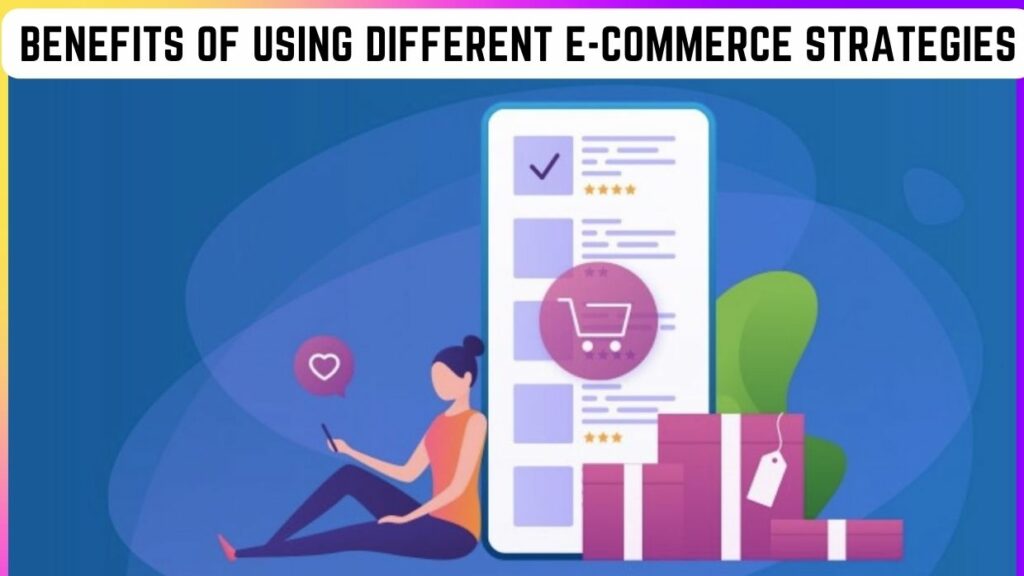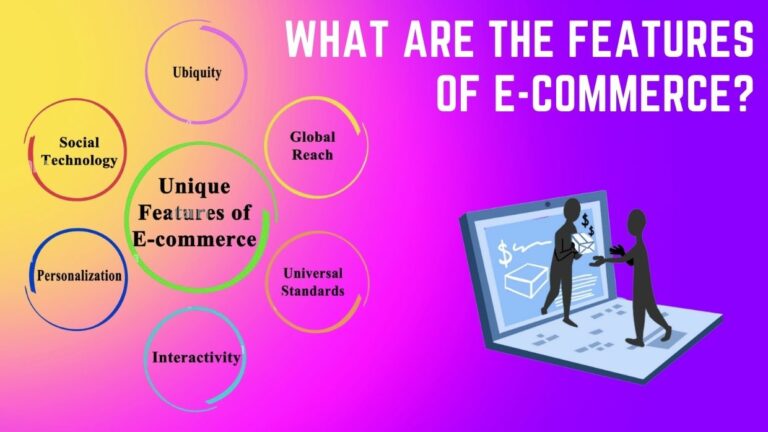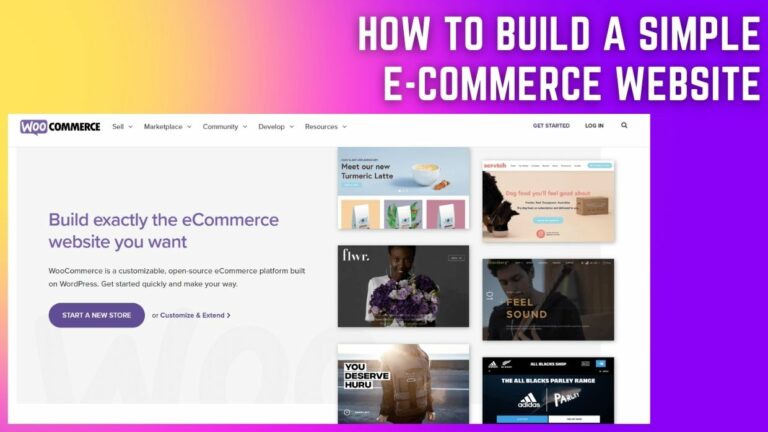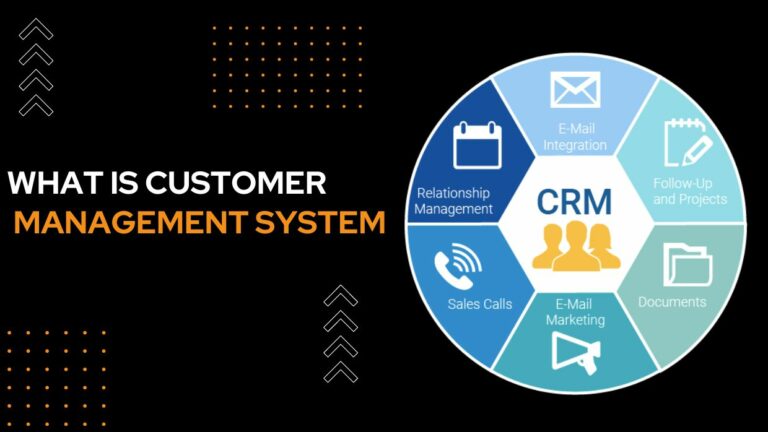E-Commerce Marketing Strategies For Maximum Results
In the ever-evolving digital world, it is no surprise that e-commerce businesses are growing rapidly. It’s important to stay ahead of the competition by creating effective marketing strategies that will help you reach your target audience and drive maximum results. Read on for an in-depth look at the best e-commerce marketing strategies and how to make them work for you.
E-Commerce Marketing Strategies
E-commerce marketing strategies are constantly evolving as the online world changes. It can be tough to keep up with the latest trends and best practices, but it’s essential to do so if you want to stay ahead of the competition. In this guide, we’ll give you an introduction to some of the most effective e-commerce marketing strategies around today.
We’ll cover everything from search engine optimization (SEO) to social media marketing, and everything in between. By the end, you’ll have a solid understanding of what it takes to succeed with e-commerce marketing.
Types of E-Commerce Marketing Strategies
There are many different types of eCommerce marketing strategies that you can use to help promote your online store and achieve maximum results. Here is a look at some of the most popular eCommerce marketing strategies:
- Search Engine Optimization (SEO): One of the most important eCommerce marketing strategies is to optimize your website for search engines. This will help ensure that your website comes up in the top search results when people are searching for products or services that you offer. There are many different techniques that you can use to improve your website’s SEO, so it’s important to do some research and find the ones that will work best for your business.
- Pay-Per-Click (PPC) Advertising: Another popular eCommerce marketing strategy is to run pay-per-click (PPC) ads on search engines such as Google and Bing. With PPC advertising, you pay each time someone clicks on one of your ads. This can be an effective way to drive targeted traffic to your website, but it can also be expensive if you don’t know what you’re doing.
- Social Media Marketing: An increasingly popular way to market online stores is through social media platforms such as Facebook, Twitter, and Instagram. By creating engaging content and building up a following on these platforms, you can reach a large audience with your eCommerce marketing messages. Just make sure not to overdo it or you could end up annoying your followers.
- Email Marketing: Email marketing is another great way to reach potential customers and build relationships with them. By sending out regular emails with discounts, news, or other special offers, you can stay top-of-mind and increase the chances that they’ll come back to your store when they’re ready to buy something.
- Content Marketing: Content marketing is all about creating high-quality content that provides value to your target audience. This could be anything from blog posts and infographics to videos and podcasts. If done right, content marketing can help you establish yourself as an authority in your industry and generate more leads for your business.
These are just a few of the many eCommerce marketing strategies that you can use to help promote your online store and drive more sales. It’s important to keep in mind that no single strategy will work for everyone so it’s important to experiment with different techniques until you find the ones that work best for you.
Benefits of Using Different E-Commerce Strategies

Different e-commerce strategies can offer different benefits depending on what your business goals are. For example, if you’re looking to increase brand awareness or drive traffic to your website, a paid search campaign might be a good option. Or, if you’re looking to boost online sales, a retargeting campaign could be a better fit.
Here are some of the potential benefits you could see from using different e-commerce marketing strategies:
Increased brand awareness: A well-executed e-commerce marketing strategy can help increase brand awareness for your business. This can lead to more website visitors and potentially more customers down the line.
A well-executed e-commerce marketing strategy can help increase brand awareness for your business. This can lead to more website visitors and potentially more customers down the line. More website traffic: Different e-commerce marketing strategies can help drive traffic to your website. The more traffic you have, the more opportunities you have to convert visitors into customers.
Different e-commerce marketing strategies can help drive traffic to your website. The more traffic you have, the more opportunities you have to convert visitors into customers. More online sales: If your goal is to boost online sales, then using e-commerce marketing strategies that are designed to increase conversion rates is key. By driving targeted traffic to your website and making it easy for visitors to buy from you, you can see a significant increase in online sales.
Creating an Effective Digital Marketing Plan
It’s no secret that e-commerce is becoming increasingly competitive. In order to keep up with the competition and stay ahead of the curve, it’s important to have a solid digital marketing plan in place. But what exactly goes into an effective digital marketing plan?
Here are a few key components to consider:
- Define your goals and objectives. What are you hoping to achieve with your digital marketing efforts? Make sure your goals are specific, measurable, attainable, relevant, and time-bound (SMART).
- Do your research. Familiarize yourself with your target audience and learn what appeals to them most. What kind of content do they engage with? What social media platforms do they use?
- Create compelling content. Once you know what resonates with your audience, it’s time to start creating content that will capture their attention and keep them coming back for more. Be sure to mix things up – don’t just stick to one type of content or one format. Keep things fresh and interesting!
- Promote your content. Make sure your target audience sees your content by promoting it through various channels, such as social media, email marketing, paid to advertise, etc.
- Measure your results. Keep track of how well your digital marketing efforts are performing by monitoring various metrics such as website traffic, engagement rates, leads/sales conversions, etc. This will help you determine what’s working and what needs to be tweaked or improved.
By following these steps and staying up-to-date with the latest digital marketing trends, you should be able to create a comprehensive and effective digital marketing plan that will help your business stand out from the competition.
Tips on Optimizing Your Online Presence
Assuming you have a website or online shop, the following tips will help you optimize your online presence and get maximum results from your e-commerce marketing efforts.
- Make sure your website is mobile-friendly. More and more people are using their smartphones and tablets to browse the web and make purchases. If your website isn’t optimized for mobile devices, you’re missing out on a lot of potential customers.
- Use engaging visuals. People are visual creatures, so make sure your website and product photos are high-quality and attractive. A picture is worth a thousand words, so make sure yours tell a story that entices people to buy from you.
- Use social media to your advantage. Social media platforms like Facebook, Twitter, Instagram, and Pinterest are great ways to connect with potential customers and promote your products or services. Make sure you have an active presence on social media and that you’re regularly sharing interesting and relevant content.
- Offer something unique. There’s a lot of competition out there, so it’s important to offer something that sets you apart from the rest. Whether it’s a unique product, unrivaled customer service, or competitive prices, find what makes you different and highlight it on your website and in your marketing materials
Analyzing Your Customer Data for Maximum Results
In order to ensure that your e-commerce marketing strategies are effective, you must first analyze your customer data. This data can be obtained from a variety of sources, including your website’s analytics, customer surveys, and sales data. Once you have this data, you can begin to identify patterns and trends among your customers. This information can then be used to create targeted marketing campaigns that are more likely to result in conversions.
There are a number of different ways to analyze your customer data. However, some methods are more effective than others. One popular method is to use market segmentation. This involves dividing your customers into different groups based on factors such as age, gender, location, and interests. This allows you to create targeted marketing messages that are more likely to resonate with each group.
Another effective way to analyze your customer data is through cohort analysis. This involves tracking the behavior of groups of customers over time. This information can be used to identify trends and patterns in customer behavior. Cohort analysis is an essential tool for e-commerce businesses as it can help you understand how your customers interact with your business over time.
Once you have analyzed your customer data, you can begin to develop e-commerce marketing strategies that are tailored to your specific audience. By using this information wisely, you can create campaigns that are more likely to result in increased traffic and conversions.
Examples of Successful E-Commerce Strategies
There are many different types of e-commerce strategies that can be successful, depending on the products or services that you offer.
Here are a few examples of successful e-commerce strategies:
- Offering discounts or coupons: This is a great way to attract new customers and encourage them to make a purchase. You can offer discounts for first-time buyers, bulk purchases, or even loyalty rewards for returning customers.
- Creating a sense of urgency: Urgency can be a powerful motivator for customers. By offering limited-time deals or promotions, you can create a sense of urgency that encourages people to buy now instead of later.
- Free shipping: Shipping costs can be a major barrier to purchase, so offering free shipping (or even just discounted shipping) can be a great way to increase sales.
- Improved customer service: Customers who have a positive experience with your company are more likely to buy from you again in the future. Offer outstanding customer service by responding quickly to questions and concerns, and resolving issues promptly.
- Better product descriptions: Good product descriptions help potential customers understand what they’re buying and why they need it. Be sure to include key details about features, benefits, and any special offers in your product descriptions.
Conclusion
As demonstrated, there are many marketing strategies to help you achieve maximum results in your e-commerce business. With some strategic planning and the right combination of tactics, you can reach more customers and generate more sales than ever before.
It is important to remember that these strategies take time to implement and adjust as market conditions change, so don’t be afraid to experiment with different approaches until you find what works best for your business. Don’t forget to track your progress along the way so that you can make improvements where necessary!







